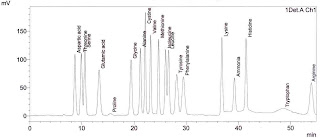From April 11-12, Pickering attended the Southern Section AOAC Meeting in Atlanta, Georgia.
The meeting was well attended, and we enjoyed some good talks with current and future customers as well as long-time friends in the industry.
In preparation for our Vendor Seminar (see below), I did some research about the southern states, and Georgia in particular. In the process, I learned a couple of interesting facts about Georgia. For example, even though Georgia is nicknamed the Peach State, they’re only the 3rd largest producer of peaches. Turns out the state is known for its Quality rather than the quantity of the fruit. According to the internet, Georgia produces A LOT of poultry & eggs (Georgia is ranked 1st in the US for production of broilers*), but also peanuts as well as cotton and tobacco.
We presented a Vendor Seminar at the meeting about our Aflatoxin Analysis products. We opted for a “show & tell” approach in which we brought in the key components to the method:
 |
| UVE Photochemical Reactor |
 |
| AflaClean Immunoaffinity Columns |
More about Georgia:
http://georgiainfo.galileo.usg.edu/gaecon.htm
http://en.wikipedia.org/wiki/Georgia_%28U.S._state%29
*Broiler: A young chicken bred for meat


















